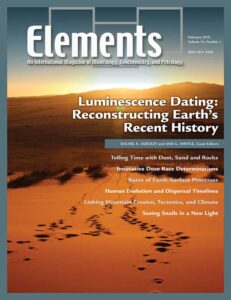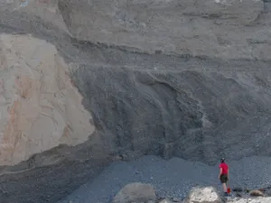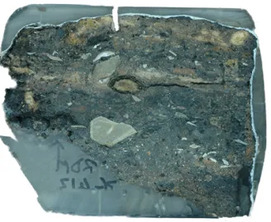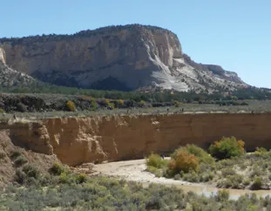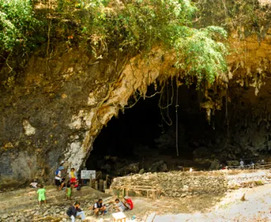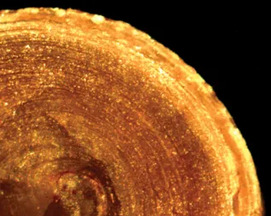Luminescence Dating: Reconstructing Earth's Recent History
Rachel K. Smedley and Ann G. Wintle – Guest Editors
Table of Contents
Luminescence dating is a geochronological tool used to determine the timing of sediment burial, pottery firing, mountain evolution, mineral formation and the exertion of pressure. The luminescence dating technique covers a large age range from modern-day to millions of years. The technique is inherently holistic, drawing upon understanding from disciplines such as physics (quantum mechanics), mineralogy (grain structure and composition), geochemistry (natural radioactivity), archaeology and Earth sciences. This issue brings together contributions on new and innovative luminescence dating methods and the latest findings related to Earth-surface processes and human existence.
Analab
Beta Analytic
CAMECA
Coherent, Inc.
Excalibur Mineral Corporation
Gemological Institute of America
International Centre for Diffraction Data
International Mineralogical Association
IsotopX
PANalytical
ProtoXRD
RFG2018 Conference
Savillex
Volume 14, Number 2 (April) • Comets
GUEST EDITORS: Michael E. Zolensky (NASA Johnson Space Center, USA) and Monica M. Grady (Open University, UK)
It is now possible, for the first time, to synthesize what has been learned regarding the mineralogy, geochemistry, and geology of comets from the Giotto, Vega, Stardust, Stardust NEXT, Deep Impact, and Rosetta missions to comets Halley, Wild 2, Borrelly, Tempel 1, and Churyumov–Gerasimenko. Articles in this issue will describe the nature of cometary inorganic phases, volatiles, notable water, and organics. As will be shown in this issue, the relationships between the organics and the volatile inventories of terrestrial planets are critical. Processes that force comets to interact with other Solar System bodies will be also discussed. For example, dust shed by comets enters the atmospheres of planets every day, observed as meteor showers that can be traced back to specific parent comets. One implication of this fact is that the enigmatic methane observed in the Martian atmosphere may arise from meteor showers of cometary material.
- Introduction to Comets: Mineralogy, Geochemistry and Geology
Michael E. Zolensky, NASA Johnson Space Center (USA) and Monica M. Grady (Open University, UK) - What We Have Learned from Missions to Comets Halley, Wild 2, Borrelly and Tempel 1
Donald E. Brownlee (University of Washington, USA), Benton C. Clark (Lockheed Martin, USA), Michael F.
A’Hearn (University of Maryland, USA), Jessica M. Sunshine (University of Maryland, USA) and Tomoki Nakamura (Tohoku University, Japan) - Rosetta Mission Takes the First In-Depth Look at a Comet
Ian P. Wright (Open University, UK), Monica M. Grady (Open University, UK), Sandra Siljeström (SP Technical Research, Sweden), and Cecile Engrand (CNRS/IN2P3, University Paris Sud, France) - Cometary Organics and Other Volatiles
Hikaru Yabuta (University of Osaka, Japan), Scott A. Sandford (NASA AMES Research Center, USA), and Karen J. Meech (Institute for Astronomy, University Hawaii, USA) - Comet Dynamics, Meteor Showers, and the Impact Record from
Comets
Peter M. Jenniskens (SETI Institute, USA) and Olga Popova (IDG RAS, Russia) - Origin of the Solar System
Sara S. Russell (Natural History Museum, London, UK)
- Luminescence Dating: Reconstructing Earth’s Recent History (February 2018)
- Comets (April 2018)
- Deep Ocean Mineral Deposits (June 2018)
- Central Andes: Mountains, Magmas and Ore Deposits (August 2018)
- Terroir: Science Related to Grape and Wine Quality (October 2018)
- Marine Biogeochemistry of Trace Elements and Their Isotopes (December 2018)



